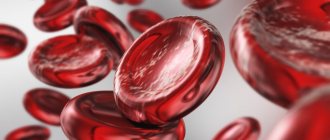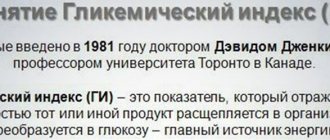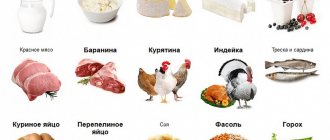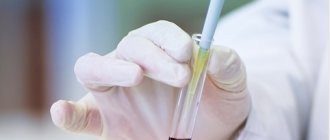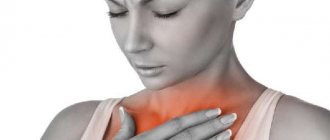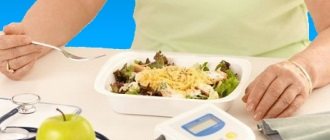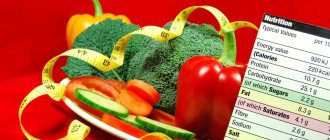A dangerous disease of the endocrine system, diabetes mellitus, does not manifest itself as spontaneously as the flu or food poisoning. A person is inclined to explain the primary signs of poor health by fatigue, poor nutrition “on the go,” and age-related changes in the body. Often, prediabetes and type 2 diabetes are diagnosed in the stage of progressive development only during a routine medical examination or medical examination.
If glucose levels are unstable, the patient is prescribed therapeutic nutrition. To control the disease, you need to know which foods lower blood sugar and which cause hyperglycemia and subsequent complications. The diagnosis of diabetes mellitus involves changes in lifestyle, eating behavior and permanent monitoring of blood sugar levels.
Why is blood sugar control necessary?
Impaired glucose absorption affects the condition of many internal organs and changes metabolic processes. Often, glucose levels rise precisely because patients are malnourished.
Refined, refined foods, improper cooking methods and processed foods overload the daily menu with substances hazardous to health.
Required rate
Any person with or without diabetes should strive for a level of up to 5.5 mmol/l 1-2 hours after each meal and in the morning on an empty stomach. A stable glucose level means a minimal risk of developing all kinds of complications of the pathology of the endocrine system.
Diet and non-insulin-dependent disease
Dietary restrictions are especially important for type 2 diabetes. The entire nutrition scheme is aimed at the following goals:
- weight loss, if necessary;
- prevention of a sharp increase in sugar.
The initial form of type 2 diabetes can be corrected with just nutrition, so the choice of ingredients for the daily menu should be very important. The moderate and severe stages of the disease cannot be avoided without drug treatment along with a strict diet.
The calorie content of foods depends on the patient's weight. If you are overweight, you will need a low-calorie diet.
In type 1 pathology, pancreatic cells die, causing insufficient insulin to be produced. In this case, replacement therapy plays a major role, and nutrition helps maintain normal weight and well-being.
Menu for a diabetic patient
Diet and glycemic index
To successfully treat the disease and prevent serious complications, people with impaired functioning of the endocrine system know which foods lower blood sugar levels. According to scientific research, food affects health in different ways.
The glycemic index (GI) shows the rate of breakdown of consumed carbohydrates into glucose. High levels mean rapid breakdown of organic compounds and a sharp rise in sugar.
A low glycemic number, on the contrary, is safe for diabetics. All food products are divided into three categories: low, medium and high GI. It is important to enrich your diet with low-index foods to avoid the negative consequences of the disease and improve your quality of life.
Important! There is a table with GI values for each ingredient; depending on heat treatment, the index decreases or increases.
Proper processing of food for pathology of the endocrine system
Product selection
When creating a diet to lower blood sugar, the main criterion is the glycemic index of foods (GI or GI). This is a digital indicator of the rate of absorption of carbohydrates into the bloodstream, measured from “0” to “100”. Products with a digital GI value of no higher than 30 units are considered ideal for a diabetic. They do not provoke sudden “glucose surges” and help reduce overall blood sugar.
The advantages of such food include:
- minimal amount of monosaccharides;
- slow absorption by the body;
- saturation for a long period of time.
A high glycemic index of foods ranges from 70 to 100. When consumed, glucose quickly penetrates into the systemic bloodstream, which leads to disruption of metabolic processes and hyperglycemia. At the same time, simple carbohydrates tend to transform into fat and are deposited in the body. This is strictly contraindicated for people with diabetes. Products that have an average GI (from 30 to 70 units) are allowed in limited quantities.
Their availability in the daily menu depends on:
- depending on the type of disease (insulin-independent patients are allowed more of this food);
- stage of diabetes (in the decompensated stage it is recommended to eliminate them);
- the general health of the patient and the doses of medications prescribed to him.
To correctly calculate the glycemic index of a dish, there are special food tables with the exact digital GI value.
The role of carbohydrates in the breakdown of sugar
For the normal functioning of all internal organ systems, it is necessary that glucose is constantly at a sufficient level. Carbohydrates entering the stomach cannot immediately enter the blood.
First, they are broken down into simple monosaccharides, and only then are absorbed in the small intestine. Excess of the substance is not needed by the cells, therefore an increase in the amount of monosaccharide leads to hyperglycemia and further destruction of the tissues of the kidneys, eyes, nervous and other systems. Carbohydrates play a key role in the chain of metabolic reactions.
Organic compounds are found in the following foods:
- grain crops, which include various cereals, sweet pastries, bread, corn;
- fruits, berries;
- milk, kefir and homemade yogurt without additives;
- potato;
- sugar and honey, as well as jam and all dishes containing sugar;
- legumes
All carbohydrates are quantified in the form of a bread unit so that it is convenient for people with diabetes to calculate the value of each ingredient and plan their menu. A bread unit corresponds to 10-12 g of glucose.
The counting system will only be needed for those patients who receive different doses of the hormone insulin. People with type 2 disease without insulin support will only need the correct menu and food processing.
Prohibited foods for high blood glucose
Treating diabetes with the right diet
Recommended power plan
People with diabetes need to know which foods raise blood sugar and not include them in their diet. Healthy vegetables, fish, meat, and cereals will diversify the patient’s diet and help him improve the quality and length of life.
Healthy vegetables, mushrooms
When consuming vegetables, their processing is important. Raw ingredients raise glucose much less than boiled or fried ingredients.
When exposed to high temperatures during cooking, some of the cellulose is converted into glucose. Therefore, there should be less cooked vegetables in the diet than raw ones.
A low-carbohydrate diet may include the following vegetables that lower blood sugar in diabetes:
- white cabbage, cauliflower, seaweed without additives;
- zucchini;
- eggplant;
- fresh cucumbers;
- mushrooms;
- green beans;
- onions are only raw; boiled vegetables contain a lot of carbohydrates;
- tomatoes are raw and only in limited quantities.
Seafood
Low-fat sea fish, when consumed regularly, can cleanse the patient’s body of unnecessary substances. Tuna, mackerel, saury, and trout contain many fatty amino acids that strengthen blood vessels and the heart. Lobster, crab and other seafood that lower blood sugar have the lowest glycemic index.
The right proteins
The balance of fats, proteins and carbohydrates normalizes the health of a patient with diabetes. Proteins should be easily processed and satiating. Among the healthy ingredients are low-fat sour cream and poultry, rabbit, beef, and turkey.
Milk
Milk contains lactose, which very quickly increases the absorption of glucose in the body. Milk is replaced with heavy cream.
The benefits of fiber
To slow down the process of converting carbohydrates into simple monosaccharides, you need to increase the amount of fiber in the patient’s menu. Various nuts, cereals, as well as beans, peas, and lentils contain the most substance.
Fiber significantly slows down the breakdown of sugar and its absorption in the small intestine, which does not cause hyperglycemia. A lot of fiber is found in oatmeal, which is suitable for breakfast. Various vegetables, and especially cabbage, are rich in this substance.
| Meat and fish Meat and fish in the diet of a diabetic | Turkey, beef, lamb, chicken, and rabbit meat, which have a positive effect on blood sugar, are suitable for a low-carbohydrate diet. It is better to prepare dishes without using oily poultry skin. |
| Fresh herbs
| Fresh dill and parsley, cilantro and spinach are suitable for a diabetic diet. Herbs and spices enhance the taste of dishes and are not harmful to diabetics. |
| Nuts
| Despite the carbohydrate content in nuts or seeds, they are rich in proteins and fiber. The high calorie content of nuts limits their consumption, but they are a source of essential vitamins and minerals for any person. |
| Whole wheat bread | Products made from premium flour are quickly digestible carbohydrates, so it is better to eat bread made from coarse wheat. |
| Hard cheese Dairy products for diabetes | Hard cheese is a tasty source of calcium and is low in carbohydrates. You can include any type in the menu except feta. When raw milk is processed into hard cheese under the influence of enzymes, lactose is completely broken down, which is why they are safe for diabetics. |
| Cottage cheese and yogurt | Lactose is broken down somewhat differently during the production of cottage cheese - a small amount of the substance remains in the finished cottage cheese, so its intake is limited. White whole milk product without various additives is suitable for a low-carbohydrate diet. The maximum amount of unsweetened yogurt per day is up to 200 ml. |
General principles of nutrition for diabetics
Changing your diet is one of the cornerstones of diabetes treatment. Compliance with the rules allows the patient to manage the disease, which is the best prevention of the development of severe complications. You can develop a dietary menu yourself based on the therapeutic diet “Table No. 9” or consult a nutritionist.
The basic principles of nutrition are:
- eliminating simple carbohydrates that increase glucose levels (primarily various sweets and sugary drinks);
- compliance with the diet (5–6 times a day with 3–4 hour intervals) and drinking regime (1.5–2 liters/day);
- reducing portions;
- control of caloric content of dishes and glycemic index of foods;
- limiting animal proteins and complex carbohydrates;
- refusal to prepare dishes using the culinary method of frying;
- limiting salt and salty foods;
- consumption of foods that lower sugar.
- Keeping a Diabetes Diary.
Recommended daily nutrient ratio: carbohydrates – 45%, proteins – 20%, fats – 35%. Total calorie content – no more than 2200-2500 kcal.
What is forbidden to eat
Foods that raise blood sugar are contraindicated:
- sweets, including honey, sugar, jam, certain fruits and berries, sweet pastries and confectionery;
- smoked meats, marinades, spicy, salty dishes;
- lard, lamb fat;
- carbonated drinks;
- alcohol;
- chocolate;
- fast food.
When the patient is aware of which foods reduce blood sugar, it is much easier for him to create his menu. There are also foods that must be strictly limited.
The following list of allowed ingredients in moderate quantities will not cause harm:
- boiled, baked potatoes;
- pasta;
- bread made from premium flour;
- rice and wheat cereals;
- some fruits and berries;
- some special sweets with fructose.
Vegetables, cheeses, with a low glycemic index, normalizing blood sugar should be present along with other permitted foods in the patient’s daily menu.
Forbidden
Diabetic food basket
Products that lower blood sugar are more correctly called stabilizing this indicator. Not a single dish can replace a diabetic with the first type of disease, a timely injection of insulin. The complex process of forming glucose molecules from the amino acids of eaten proteins (gluconeogenesis) can affect sugar levels, even hours after eating.
Foods with low glycemic activity help maintain glucose levels at a minimum level for a particular stage of diabetes. A diabetic diet to lower blood sugar is based on regular consumption of foods whose GI does not exceed 35 units. With this diet, it becomes possible to control glucose and reduce the dose of medications.
Healthy vegetables, fruits and berries
Products from this category form the basis of dietary nutrition. They not only curb glycemic levels, but also enrich the body with vitamins, micro- and macroelements. Helps improve the general condition of blood vessels and eliminate “bad” cholesterol. In addition, vegetables and fruits are low in calories, which helps control body weight.
List of products approved by endocrinologists:
What fruits can you eat if you have diabetes?
- Apples. They are a source of: pectin, fiber, iron, vitamins A, C, E, manganese, potassium. Stabilizes digestion processes.
- Pomegranate. Due to the content of tannins and fiber, they stimulate intestinal functions, which have a beneficial effect on the process of hematopoiesis. Helps improve the performance of the pancreas.
- Pears. They have a diuretic and bactericidal effect. Helps cope with fluid retention in the body.
- Pomelo. Along with low GI, it is enriched with potassium, which contributes to the smooth functioning of the heart.
- Jerusalem artichoke or earthen pear. Activates the endocrine function of the pancreas to produce insulin. It is an indispensable vegetable in the menu of diabetics.
- Momordica or bitter gourd. A dietary product that helps reduce body weight, stimulates insulin synthesis and improves metabolic processes.
- Cabbage: white cabbage, cauliflower, broccoli. Contains B vitamins, strengthens the immune system and the vascular system of the body.
- Cucurbitaceae family: pumpkin, cucumbers, zucchini, squash. Combination with protein foods slows down gluconeogenesis. The high water content replenishes fluid deficiency. Zucchini and pumpkin have a higher GI, so they should be used with caution, despite the benefits for the body.
- Cowberry. Acts as a diuretic and insulin catalyst, allowing you to control glucose.
- Kalina. Contains invert sugar, which does not require insulin for transport to body tissues.
- Blueberry. Maintains the health of the pancreas, effectively fights edema, regulates glucose absorption, and has a beneficial effect on the vascular system of the visual organs.
- Black currant. Stimulates metabolic and immune processes, saturates the body with vitamins.
Most vegetables have low calorie and GI content and are optimal foods for diabetes
Legumes and cereals
Not all cereals have a low glycemic index, but when cooked (cooking), the GI decreases. Therefore, porridge must be included in the menu of people with diabetes. Legumes help enrich the diet with minerals and vitamins; when consumed regularly, they can inhibit the breakdown of nutrients. Green beans are used in folk medicine as a product that reduces sugar levels.
Cereals: oats, pearl barley, wheat improve metabolism, normalize digestive processes, and replenish micro- and macroelements. In addition, porridge allows you to maintain a feeling of fullness for a long time and reduce the risk of blood sugar changes. Legumes: beans, peas, chickpeas. They have low glycemic activity. The process of absorption of complex carbohydrates does not require insulin. Rich in minerals and vitamins.
Spices
Spices are believed to lower sugar. They do not have a direct effect on the quantitative composition of glucose, but due to their active participation in the process of gluconeogenesis, glucose absorption slows down, so sugar levels remain at the same level. Spices allowed for diabetes include oregano (oregano), cinnamon, cloves, ground pepper (black, red, white), ginger and garlic.
Protein products
Protein foods do not lower sugar, but their correct combination with permitted vegetables helps maintain glucose balance and prevent sudden “jumps” in glycemia. The sources of protein in the diabetic menu are:
- Dietary poultry meat (chicken, turkey). When cooking, it is necessary to remove oily skin from poultry.
- Nuts (hazelnuts, almonds, peanuts). It should be consumed in small quantities so as not to put stress on the weakened pancreas.
- Mushrooms. Despite the low GI, they are considered a heavy, filling food. Allowed for limited use.
- Seafood (mussels, shrimp, crabs) and lean fish. Have minimal effect on blood glucose levels. Enrich the body with protein and minerals (zinc, selenium, calcium, etc.).

